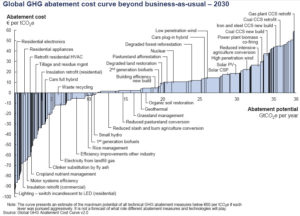Why are schools going solar? Is this the next big educational big trend – like Smart Boards or online textbooks? Yale, Princeton, Stanford and thousands of other universities have solar installations on site, but these hardly scratch the surface of the renewable energy revolution in higher education. According to a 2017 Princeton Review Survey, 64% of college applicants said that having information about a school’s commitment to the environment would influence their decision to apply to or attend the college. This begs the question- should we invest in renewables in higher education? What can be gained, and ultimately, what is at stake?
To answer these questions (and so many more), we talked to Ashwani Vasishth, Ph.D, President of the New Jersey Higher Education Partnership for Sustainability (NJHEPS), and an Associate Professor of Sustainability at Ramapo College of New Jersey about his background, work, and vision for sustainability in higher education.
When Professor Vasishth moved from India to the United States in 1984 for a master’s program at MIT, he was surprised by how little attention environmental issues were given in the international arena, compared to his home country where the architecture was uniquely adapted to the climate from location to location. From a young age, Vasishth saw the value in being aligned with nature rather than being against it—his passion grew from there.
Professor Vasishth also recognizes the importance of organizations like Second Nature that have paved the way by mobilizing diverse educational institutions to act on bold climate commitments and to create innovative climate solutions.
It’s Economic: The most straightforward, empirical argument for the shift to renewable energy is the value of economies of scale. In fact, renewable energy is an economically efficient investment and reduces overall operating costs for a university. The larger the project, the higher the savings. For example, Denison University recently installed a 2.3 MW array on 350 acres, turning Ohio’s average annual sunshine into enough power to cut the university’s use of conventional electricity by 15 percent, proving solar is no longer just a moral venture. It makes financial sense, too. Professor Vasishth also advises taking a revenue-neutral method or approach to sustainability. Using a protocol developed by the consultancy firm McKinsey to track greenhouse gas emissions, all possible actions are analyzed by cost. Staring with the actions that generate savings and working toward those that cost money, universities and other businesses can cut carbon/ reduce emissions without affecting revenue. As universities make strides toward a sustainable transformation, Professor Vasishth encourages them to keep their overall goals in mind, rather than falling into a traditional cost/benefit framework.
developed by the consultancy firm McKinsey to track greenhouse gas emissions, all possible actions are analyzed by cost. Staring with the actions that generate savings and working toward those that cost money, universities and other businesses can cut carbon/ reduce emissions without affecting revenue. As universities make strides toward a sustainable transformation, Professor Vasishth encourages them to keep their overall goals in mind, rather than falling into a traditional cost/benefit framework.
It’s Educational: Integrating solar energy not only makes economic sense and reduces the university’s carbon footprint, it also increases the student-citizens’ understanding of the intersection of energy and sustainability.. “It is increasingly imperative that every person who graduates from a university, anywhere in the country, has a working knowledge of what it means to live sustainably,” notes Professor Vasishth. In order to do this, sustainability practices need to be integrated into the curriculum, a major challenge facing universities in the ecological crisis today. In Ten Ways to Integrate Sustainability into the Curriculum, the Association of Sustainability in Higher Education (AASHE) helps universities brainstorm ways to “use the campus as a laboratory.” This is modeled by Dickinson College in Carlisle, Pennsylvania, where students produce biodiesel from waste cooking oil in the chemistry lab. Whether the subject is math, history, chemistry, literature, or philosophy, Professor Vasishth notes there are ways to incorporate sustainability into the material, through being creative about how about how to shift one’s mindset towards the narrative of brokenness caused by climate change and the redemption that is possible through sustainability.
It’s Enduring: Ultimately, colleges and universities are not only educating but investing in the lives of future generations. In that vein, Professor Vasishth encourages institutions to look more deeply at their own operations and to make a clear commitment to reducing their own impact. Vasishth shares:
“If students see sustainable behavior, they are more likely to emulate sustainable behavior. If we tell them to be sustainable but aren’t doing it ourselves, we lose the battle. A cultural shift needs to happen among students. If it is true that things cannot hold the way that they are today, it is imperative that we find and show students a different way of doing things.”
Professor Vasishth argues that students have responsibility for changing how societal decisions get made, by first discovering how they are made, then teaching students that they can think differently. Throughout time, colleges and universities have led the way in many scientific breakthroughs and social movements using their voice and influence in communities across America. It only seems fitting that they would lead the charge in the transition towards clean energy.
